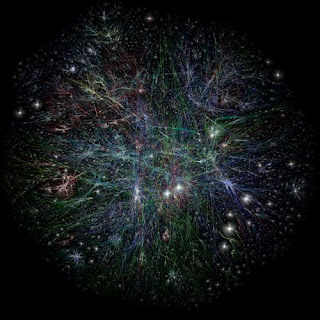
The folks at TeleGeography have just posted a new map entitled "The Global Internet Map". According to their press release this new map:
...illustrates the the key Internet connections that link the countries and the five major regions of the world. Regional close-up maps detail the primary intra-regional Internet routes in Europe, Asia, North and Latin America, and Africa. Nine accompanying figures and tables present valuable data about Internet bandwidth by country, regional and global Internet capacity growth, service providers, traffic by application, wholesale IP transit pricing, and broadband user growth.
This is certainly the most comprehensive, well designed, current map out there of the physical infrastructure of the internet that I have seen. I've posted on previous maps of theirs before.





























